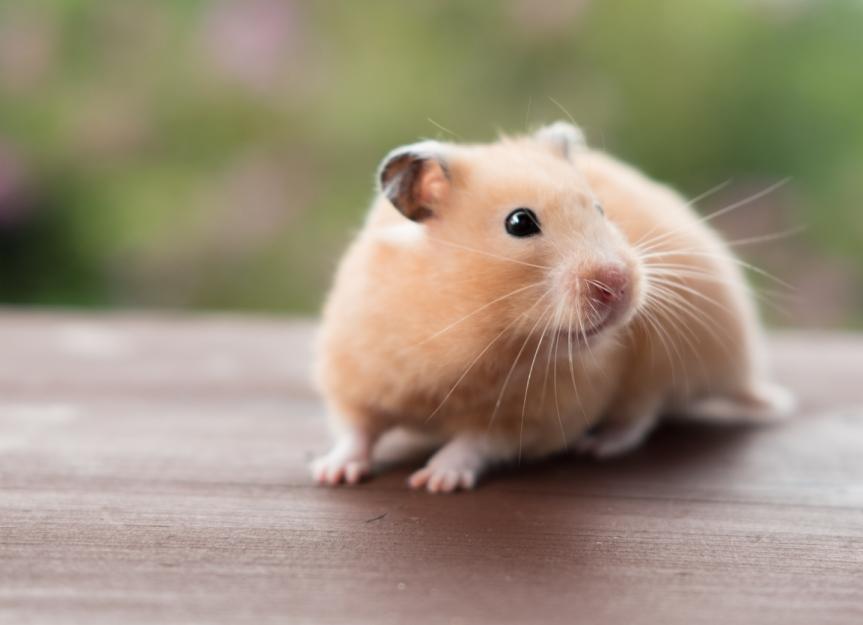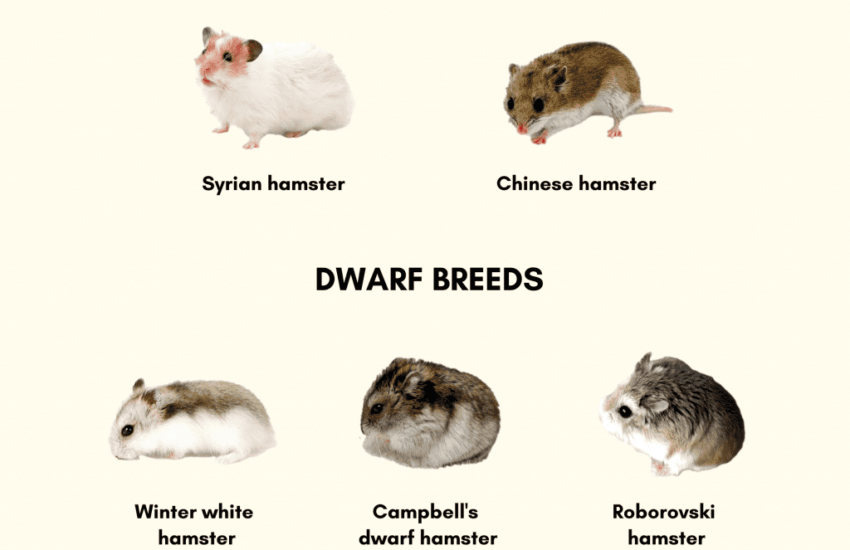Best Dwarf Hamster Breeds for Pets
Dwarf hamsters are becoming increasingly popular as companion animals due to their small size, charming behavior, and delightful presence. This article explores some of the best dwarf hamster breeds, providing you with insights on their care, personality traits, and what makes each breed unique. Whether you are a seasoned hamster owner or a first-time pet parent, you’ll find valuable information here to help you choose the perfect furry friend!
Popular Dwarf Hamster Breeds
When selecting a hamster breed, it’s important to consider various characteristics such as temperament, size, and care requirements. Dwarf hamsters, including the Campbell’s dwarf hamster, Roborovski hamster, and Russian dwarf hamster, stand out for their friendly nature and adaptability. Each kind exhibits distinct behaviors and appearance. Understanding these differences will help you select a dwarf hamster that best fits your lifestyle.
Campbell’s Dwarf Hamster
Campbell’s dwarf hamsters are known for their playful demeanor and robust health. Typically weighing between 2 to 4 ounces, they are friendly and relatively easy to handle, making them ideal for families. Their coat can vary in color, but they are often seen with a variety of shades, including gray and brown. Regular socialization is key to curbing their sometimes-nippy tendencies. A perfect addition to a family, Campbell’s dwarf hamsters enjoy interactive play and exercises in their habitat.

Roborovski Hamster
Roborovski hamsters are the smallest of the dwarf hamster breeds, averaging only about 1.5 to 2 ounces in weight. They’re characterized by their energetic nature and elusive personality; often, they prefer to scurry about their cage rather than being held. Their fur is fine and typically sandy or white, making them visually appealing pets. Because of their speed and agility, Roborovski hamsters thrive best in spacious, enriching environments with plenty of exercise options.

Winter White Dwarf Hamster
The Winter White dwarf hamster can be recognized for its beautiful winter coat that changes color slightly in colder temperatures. Usually weighing between 2 to 5 ounces, they possess a friendly temperament and are generally easy-going. Unlike some of their cousins, Winter Whites tend to tolerate interaction well, which makes them more suitable for children. Their adaptability and friendly disposition make them a popular choice for first-time hamster owners.

Understanding Dwarf Hamster Behavior
Each dwarf hamster breed has its own unique set of behaviors and personality traits, which can greatly influence your experience as a pet owner. Knowing what to expect from your dwarf hamster will guide how you set up their habitat, socialize with them, and maintain their well-being. For instance, while some may enjoy handling, others prefer solitary play and observation.
Socialization and Handling
Socialization is essential for dwarf hamsters to ensure they are comfortable with human interaction. For breeds like the Campbell’s and Winter White dwarf hamsters, frequent gentle handling can foster a bond. Always handle your hamster carefully and allow them to acclimatize to your scent and touch. In contrast, Roborovski hamsters may prefer minimal handling because of their more skittish nature.
Exercise Needs
Dwarf hamsters are naturally energetic creatures requiring ample space and opportunities for exercise. They often enjoy running on wheels, exploring tunnels, and enjoying playtime outside their cage. It’s crucial to provide them with varied activities and enrich their environment. For example, setting up a small playpen can offer them a safe place to explore while outside their cage, promoting physical activity and mental enrichment.
Cage Setup and Environment
A proper cage setup plays a significant role in a dwarf hamster’s behavior and happiness. Choose a spacious, multi-level habitat with hiding spots, tunnels, and toys to stimulate your hamster’s natural curiosity. Always include bedding material for them to burrow into, and avoid wire-bottom cages to ensure their feet remain protected. Additionally, regular cleaning and maintenance are key to keeping your dwarf hamster healthy and thriving.
Feeding Your Dwarf Hamster
Feeding your dwarf hamster a balanced and nutritious diet is essential for their health and longevity. Different breeds may have slightly varied dietary needs, so understanding your hamster’s requirements will help you provide the best care.
Commercial Food Blends
Commercial hamster pellets or seed mixes are convenient and designed to meet the nutritional needs of dwarf hamsters. Look for high-quality brands with a balance of protein, fat, and fiber. Ensure that the food contains seeds, grains, and occasional treats like dried fruits or vegetables. Fresh foods can also be introduced in moderation, but always research which fruits and vegetables are safe for your specific breed.
Water and Supplements
A constant supply of fresh water should always be available for your dwarf hamster. Drinking habits may vary among different breeds, but water bottles are typically the best option. Be cautious to change the water daily and clean the bottle to prevent bacterial build-up. Occasionally, you can provide supplements like calcium and vitamins to promote health, especially during molting or periods of increased activity.
Feeding Schedule
Establishing a consistent feeding schedule will help regulate your pet’s dietary habits. Dwarf hamsters are nocturnal and usually active at night, hence feeding them in the evening ensures they have food available during their active hours. Observe your hamster to adjust the quantity as necessary to avoid obesity, which can lead to health problems.
Common Health Concerns for Dwarf Hamsters
Just like any other pet, dwarf hamsters are prone to specific health issues. Regular check-ups and consultations with a veterinarian specialized in small animals are vital to keeping your hamster healthy.
Signs of Illness
Being vigilant about potential signs of illness in your hamster is crucial. Common signs include lethargy, changes in eating or drinking habits, abnormal fur loss, and unusual behavior. If you notice any of these warning signs, promptly consult a veterinarian to assess the situation. Early diagnosis can often prevent more serious health issues.
Preventative Care
Preventative care involves regular habitat cleaning, consistent diets, nail trimming, and providing fresh water. Pay attention to dietary requirements and avoid overfeeding, as obesity can lead to severe health consequences for dwarf hamsters. Regularly monitoring their environment will also help spot any changes that may indicate underlying health problems.
Typical Lifespan and Veterinary Visits
The average lifespan of dwarf hamsters ranges between 2 to 3 years, although some may live slightly longer with proper care. Regular veterinary visits not only help in preventing diseases but also provide an opportunity to discuss dietary needs and habitat changes that might benefit your hamster. A reputable vet familiar with exotic pets can ensure a longer, happier life for your furry companion.
Key Takeaways
- Dwarf hamsters, such as the Campbell’s, Roborovski, and Winter White, are popular pet choices due to their manageable size and sociable nature.
- Understanding your specific hammock breed’s behavior will enhance your interaction and overall pet ownership experience.
- A proper diet, including a mix of commercial hamster foods and fresh produce, is essential for your dwarf hamster’s health.
- Regular check-ups and awareness of health signs can prevent various health issues common among dwarf hamsters.
- Providing a spacious, stimulating environment is crucial for the well-being of your pet.
FAQ
1. What is the best cage size for dwarf hamsters?
A cage for dwarf hamsters should ideally be at least 24 inches long by 12 inches wide. However, a larger cage allows for more enrichment options, providing ample space for exercise and exploration. Vertical space with multiple levels can also enhance their living conditions.
2. Can dwarf hamsters be kept together?
Some dwarf hamster breeds, like Campbell’s and Winter Whites, may be kept in pairs or small groups if they are introduced at a young age and have ample space and resources. However, Roborovski hamsters are generally more solitary and are best kept alone to avoid territorial disputes.
3. How often should I clean my hamster’s cage?
The cage should be completely cleaned every 1-2 weeks, with daily spot cleaning to remove waste and uneaten food. Consistent maintenance helps ensure a clean and healthy environment for your dwarf hamster.
4. What fresh foods are safe for dwarf hamsters?
Safe options include small pieces of carrots, peas, cucumbers, and occasionally fruits like apple slices or berries, but make sure to research the specific foods you give and avoid citrus fruits.
5. How do I bond with my new dwarf hamster?
Start slowly by letting your hamster get used to your presence. Gradually introduce gentle handling and offer treats to foster trust. Consistency, patience, and gentle interaction will strengthen your bond over time.
